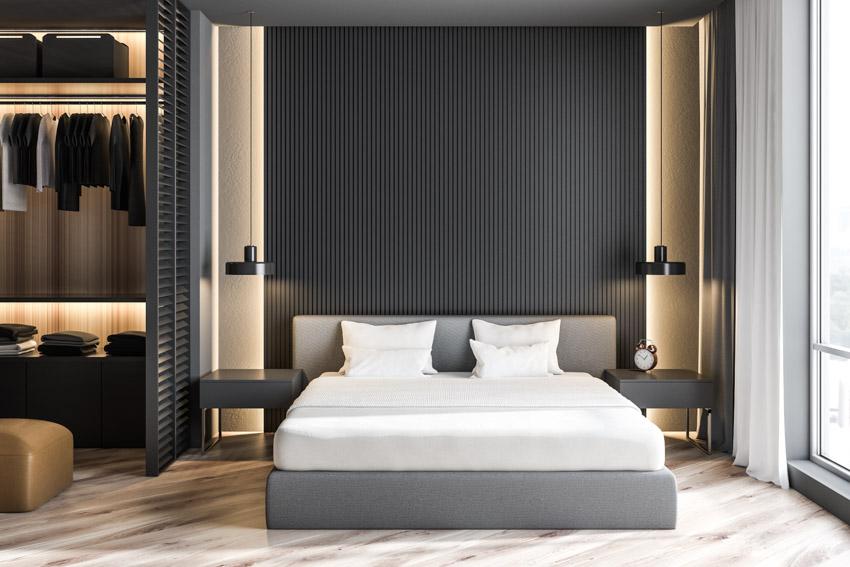Acoustic panels are often praised for their ability to improve sound quality and reduce noise, making them a popular choice for both residential and commercial spaces. However, understanding the potential drawbacks of acoustic panels is essential before making an investment. This article explores these limitations in depth to help you make an informed decision.
1. Aesthetic Limitations
One of the most significant drawbacks of acoustic panels is their impact on the aesthetic of a space. While some panels are designed to be visually appealing, many standard options can look industrial or out of place in certain environments.
- Limited Design Choices: Most acoustic panels come in neutral colors and plain designs, which may not suit all decor styles.
- Custom Options Are Costly: Opting for custom colors, patterns, or shapes to match your space can increase costs significantly.
- Visual Bulk: Acoustic panels can appear bulky, particularly when used in large quantities or in smaller rooms.
Example:
Imagine a cozy home office with a modern, minimalist design. Adding plain, boxy acoustic panels might disrupt the flow of the room’s aesthetic.
2. Installation Challenges
Installing acoustic panels isn’t always a straightforward process, especially if you’re aiming for maximum sound control.
- Complexity: Proper installation often requires specialized knowledge to ensure panels are placed effectively.
- Time-Consuming: Mounting panels can be time-intensive, especially when working in larger spaces.
- Potential Damage: Improper installation can lead to wall damage, such as holes or marks, which could necessitate repairs if the panels are ever removed.
Step-by-Step Installation Process
- Measure the Space
- Mark Placement Points
- Mount Brackets or Adhesive
- Secure Panels in Place
3. Cost Considerations
The initial cost of acoustic panels can be prohibitive for some, and ongoing expenses can also accumulate.
- Upfront Investment: High-quality acoustic panels, particularly those made from eco-friendly or high-performance materials, can be expensive.
- Maintenance Costs: Depending on the material, acoustic panels may require special cleaning products or treatments to maintain their performance.
- Customization Expenses: Custom designs or specialty panels that blend aesthetics with functionality can drive up the overall cost.
4. Durability Issues
While many acoustic panels are built to last, their durability can be a drawback in certain conditions.
- Damage from Moisture: Acoustic panels made from materials like fabric or wood composites can absorb moisture, leading to warping or mold growth.
- Wear and Tear: In high-traffic areas, panels may show signs of wear more quickly, especially if they are not designed for heavy use.
- Replacement Frequency: In cases where panels degrade, replacing them can be costly and may require the same installation process as the initial setup.
5. Limited Soundproofing Capabilities
It’s crucial to note that acoustic panels are designed primarily for sound absorption, not soundproofing.
- Sound Absorption vs. Soundproofing: Acoustic panels are effective at absorbing sound within a room, reducing echo and improving sound quality. However, they do not prevent sound from escaping or entering the room.
- Supplementary Measures Needed: For comprehensive soundproofing, additional solutions like mass-loaded vinyl or specialized insulation may be required.
- User Expectations: Those expecting complete sound isolation may be disappointed when they find that acoustic panels alone don’t provide full soundproofing.
Summary Table: Key Drawbacks of Acoustic Panels
| Drawback | Description | Potential Impact |
|---|---|---|
| Aesthetic Limitations | May not blend well with all decor styles | Can disrupt room design; costly custom options |
| Installation Challenges | Can require expertise and may damage walls | Time-consuming and possible repair costs |
| Cost Considerations | High upfront costs and ongoing maintenance | Financial strain, especially with customization |
| Durability Issues | Susceptible to moisture and wear | Frequent replacements in some environments |
| Soundproofing Limits | Does not fully isolate sound | Might need supplementary soundproofing methods |
6. Environmental Concerns
Sustainability is becoming a significant consideration in home and office design.
- Material Composition: Many acoustic panels are made from synthetic materials that are not biodegradable.
- Eco-Friendly Alternatives: While there are sustainable options available, they often come at a higher price.
- Recyclability: Disposal can be problematic as not all panels are recyclable, adding to environmental waste.
7. Maintenance Needs
Lastly, maintenance is another factor to weigh.
- Dust and Stain Accumulation: Fabric-covered acoustic panels, in particular, can collect dust and stains over time, requiring regular cleaning.
- Cleaning Challenges: Cleaning some materials can be difficult without specialized products that don’t damage the panel surface.
- Longevity Concerns: Without proper care, the lifespan of acoustic panels can be shorter than expected.
FAQ: Common Questions About Acoustic Panel Drawbacks
-
Are acoustic panels suitable for all types of rooms?
While they can be used in most rooms, their aesthetic and installation requirements may not suit all spaces, particularly smaller or highly designed rooms.
-
Can I install acoustic panels myself?
Yes, but DIY installation can be tricky without proper tools or instructions. Hiring a professional is often recommended for optimal results.
-
Do acoustic panels completely block noise?
No, acoustic panels primarily absorb sound rather than block it. Full soundproofing requires additional measures.
-
What are the most common materials used in acoustic panels?
Common materials include foam, fabric, and wood composites, each with varying degrees of durability and cost.
-
Are there eco-friendly acoustic panel options?
Yes, there are eco-friendly options made from recycled or natural materials, but these can be more expensive.








